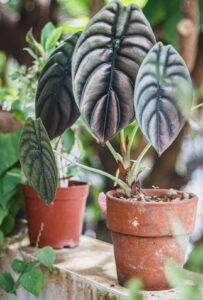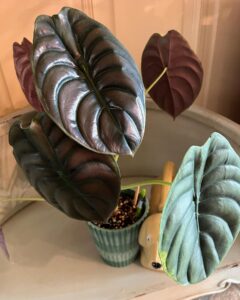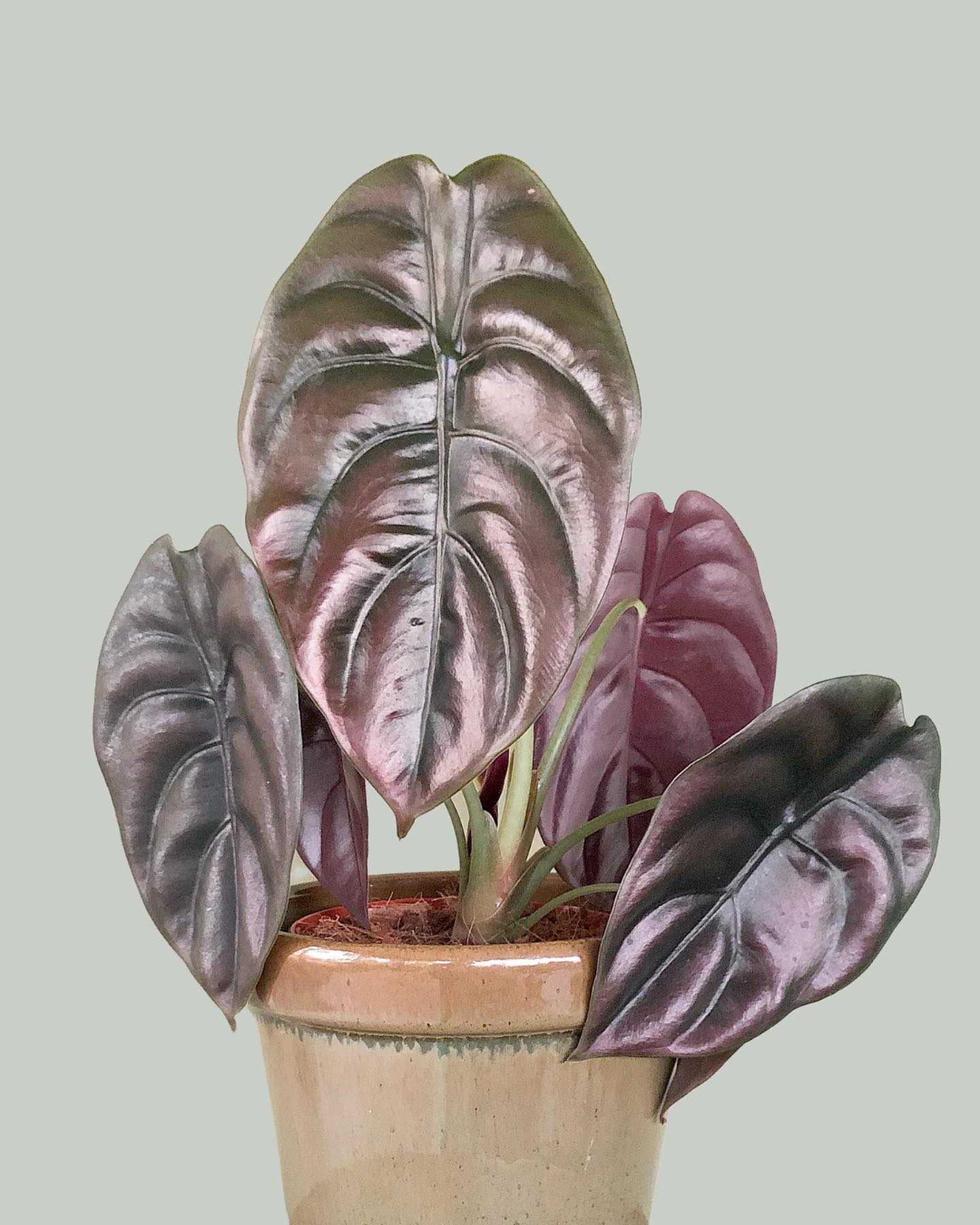Basic Information
Explore the care essentials for Alocasia Cuprea, a striking houseplant with a metallic allure. This guide offers detailed insights on lighting, watering, soil, and more, and pro tips to ensure your Alocasia thrives. This unique and vibrant species is perfect for plant lovers seeking to enrich their indoor garden.



Light
This plant flourishes in bright, indirect light, but direct sunlight should be avoided to prevent leaf scorching. A prime location is near north or east-facing windows. In regions with dark winters, it’s beneficial to move the plant to the brightest available spot or supplement with a grow light, ensuring it doesn’t enter dormancy due to insufficient light.
Water
Alocasia Cuprea requires careful watering – enough to keep the soil consistently moist but not waterlogged. Overwatering can lead to root rot, a common issue with this species, so it’s vital to check the soil’s moisture level before watering. Discarding excess water from trays or pots is crucial to prevent the roots from sitting in water, which can cause health problems for the plant.
Soil
Thrives in well-draining, nutrient-rich soil. A mix of peat moss and perlite or coco coir and perlite works well. Flushing the soil every 3 to 4 months helps remove excess salt from fertilizers, preventing potential damage to the plant.
Temperature
The Alocasia Cuprea thrives in warm environments, preferring daytime temperatures between 50-85°F (10-29°C) and slightly cooler nighttime temperatures of 54-65°F (12-18°C). It’s sensitive to cold drafts and extreme temperatures, so keeping it away from air conditioners, heaters, and cold windows during winter is essential.
Humidity
High humidity levels, ideally around 80%, are best for this plant, though maintaining around 60% is more practical in home settings. Using humidifiers, pebble trays, or grouping plants together can help achieve and maintain the required humidity levels. High humidity is crucial for preventing leaf tip burn and maintaining the health of the plant.
Fertilizer
Alocasia Cuprea is a heavy feeder, especially during the growing season. Fertilizing every two weeks with a diluted all-purpose houseplant fertilizer is recommended, but it’s essential to reduce or stop fertilization during the winter to prevent salt buildup, which can damage the plant.
Growth Rate
This plant has a moderate growth rate, typically reaching heights of 12-18 inches. Ensuring it receives adequate light, water, and nutrients is critical to promoting healthy growth. Large, vibrant leaves are a hallmark of the Alocasia Cuprea, and maintaining the right care conditions helps achieve this.
Pet Safety
Due to its calcium oxalate content, Alocasia Cuprea is toxic to pets and humans. Care should be taken to place the plant out of reach to avoid accidental ingestion, which can cause irritation or more severe health issues.
Grow in Semi-Hydro
- Alocasia plants excel in Semi-hydroponics (LECA/Pon) due to their natural inclination for root growth and humidity.
- Successfully transitioning Alocasia to Semi-hydroponics is enhanced with a Nutrient Stagnant Wicking (NSW) setup.
- Alocasia roots adapt seamlessly to the water in LECA/Pon, with quick resolution of any root hair issues in NSW setups.
- Fertilizer includes a nutrient mix concentration of approximately 800-1000ppm.
- These plants are versatile in different temperature and humidity settings, thriving in controlled environments.
- Long-term care involves maintaining a constant water reservoir and performing occasional system flushes for sustained growth.
Tips
- Protecting the plant from temperature extremes and drafts is crucial for its well-being. Keeping the plant in a warm, stable environment is critical during colder months.
- Pruning old or damaged leaves not only keeps the plant looking tidy but also encourages new growth. Regularly checking for and removing any unhealthy foliage helps maintain the plant’s health and aesthetic appeal.
- Repotting should be done in the spring, which is the best time for the plant to adapt to a new pot and soil. When repotting, choose a container slightly larger than the previous one to accommodate root growth.
- For propagation, it’s advisable to wait until the offshoots are sufficiently developed before separating them from the mother plant. This ensures a better growth potential for the new plants.
Dive into Alocasia Cuprea care with this handy guide, and get ready to watch your plant flourish and bring a touch of the tropics right into your home!
Happy planting! 🌱


